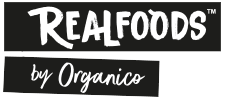You have no items in your shopping cart.
You want to eat for the climate? It’s easy – only two rules matter. Rule number one: reduce your waste. Rule 2: diet switch – cut down on meat. Simple and straightforward.
On a global scale approximately 1/3rd of food grown is wasted, that’s 1.3bn tons of edible food, with a carbon footprint in excess of 3.3bn tons and equivalent to 28% of the world’s agricultural area. Imagine not just the Co2 benefit but the benefit for nature, water systems, soil health and biodiversity… if we just wasted less.
Waste happens at all phases of the food chain but in Europe and North America for example more than 30% of the waste is at the point of consumption. Not counted incidentally is the waste of over-eating! Nor the fact that some of that food waste land has actually been converted from forestry, releasing even more Co2.
Second, looking just at the agricultural stage - in other words excluding food manufacture, transport and distribution – 80% of GHG emissions are in meat, dairy and rice. Quick and important fact check: when you do a lifecycle analysis of any given food product the transport and delivery side of it is very small, just 5% to 10% of total product emissions. Eating local is NOT a climate solution. Cutting down on red meat and dairy are. Our World in Data produce a very good series of articles and graphs on Climate Change and everything Co2 but one that is well worth picking out and highlighting on the diet issue is the one below which shows how much Co2 could be saved with different diet models. Interestingly the egg + fish okay diet is almost as good as the vegan diet.
A second important fact check – beware of what looks like deliberate mistake estimates for the impact of meat in terms of total emissions. The correct figure for total agriculture and food industry emissions is somewhere between 24% to 30%. The road to Co2 reductions is still primarily one of switching off the fossil fuel tap. Finally, a little addendum: Lancet is one of the most prestigious medical journals around and in 2019 a group of experts was commissioned to produce the ideal health and environmental diet, knowing that the modern diet has led to an obesity crisis and many other health problems. The result was the Eat Lancet Diet with beef basically down to a burger a week and lashing of, predictably, fruit, veg, wholegrains and plant protein.
Eat Lancet: Planet and Human Health Ideal Plate
Armed with the facts we’re now faced with the laziness of habit and the problem of will power! Here are five little tips to help make the transformation to climate friendly eating, remembering that it will also benefit health, moods and nutrition – what’s not to like?!
Five Climate-friendly Eating Tips
- Institute meat-free days or meals. Make conscious “not today” decisions and as you get into the habit, expand it.
- Portion control. You’re hungry you pile it on your plate, you over-eat and or chuck it away. So just put less on your plate to start with. On which point the serving dish is a great idea when eating together – everyone helps themselves and anything left can be re-used.
- Use and plan your leftovers. Simple really. Cook up your leftovers, freeze them, make a soup, a stew, a salad, do it soon before they go off.
- Be sell-by date sensible. That means checking dates when you buy products but also applying common sense – don’t chuck it away past the date unless it’s off. Smell it, touch it, taste it.
- Bulk cook and freeze. Not strictly speaking just about Co2 but about your whole approach to home cooking because a lot of the time we actually don’t feel like it, all that cutting and chopping and waiting and stirring so why not bulk prep when you do feel like in and then you have a whole load of delicious home meals ready to go and portioned up.

Truth is we can’t solve the climate crisis by ourselves but unless you’re James Bond you don’t win a war by yourself. We all need to be on board and it can also mean eating better and healthier too. Last but not least if its food and eating well we’re looking at then the best diet for sustainability and health is an organic one. Organic agriculture protects soils, keeps water systems clean, increases resilience, stores more carbon and boosts biodiversity.
What are the carbon opportunity costs of our food? - Our World in Data
FAO - News Article: Food wastage: Key facts and figures
EAT-Lancet Commission Summary Report - EAT (eatforum.org)
Charles Redfern for Organico Realfoods.













